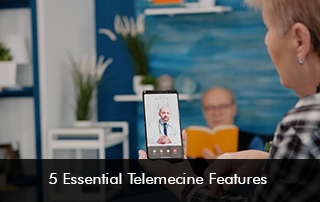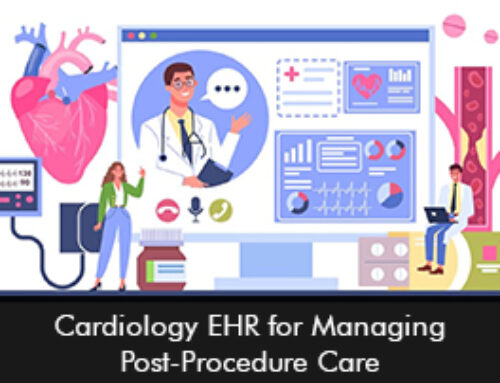Since the pandemic hit in May 2020, telemedicine adaptation rates have increased all over the world. Telemedicine EMR Software has helped to connect patients and doctors seamlessly so patients can receive remote care promptly.
What is telemedicine?
The telemedicine platform uses telecommunications technology to connect patients and providers using video conferencing, the real-time interaction helps to offer quick diagnosis and ongoing treatment. According to a report by McKinsey, telehealth use has accelerated to 38 times the pre-pandemic numbers.
Reasons for the positive trend in telemedicine EMR software
The following factors have increased the growth trend in telemedicine,
- The COVID-19 pandemic led to the urgency for healthcare organizations to offer remote care options and as a result, telemedicine came to the limelight.
- Reduced healthcare costs.
- Convenience for patients.
- Safe means of receiving treatment during the pandemic.
- Quick medical intervention.
Telemedicine today
It is crucial that hospitals and healthcare organizations offer the option of telemedicine to their patients. The patients also desire their provider to offer remote care options because of the convenience benefits as the need to commute to the doctor’s office is eliminated.
5 important features to look for in a telemedicine EMR software
- Patient and provider profiles – The patient profile feature is important as it contains important information like patient’s medical history, insurance verification, prescriptions and basic data like name, age and gender. When a telemedicine session is going on patients can easily share this information with their doctor to offer accurate diagnosis. While, doctor profiles help them to manage schedules and availability for online sessions with patients.
- Remote scheduling functionality – To provide a seamless patient experience it is vital that a telemedicine solutions offers an appointment management feature. Through appointment management the patient journey can be smooth and also keep patients satisfied even before they see the doctor. Through remote scheduling patients can easily book, change and manage appointments in the telemedicine application without having to call the clinic.
- Alerts and reminders – A good telemedicine EMR software solution will have an automatic alerts and reminders feature. Patients usually book appointments beforehand and can forget on the actual day. This can cause the issue of patient no-shows and as a result can affect the revenue stream. Through automatic reminders patients and providers can keep track of their appointments efficiently.
- E-prescription – The e-prescription functionality in the telemedicine solution allows clinicians to create and send prescriptions electronically to patients during a telemedicine session. When providers can prescribe drugs right in the app, chances of human errors can go down which enhances patient safety.
- HIPAA compliant – It is critical that a telemedicine platform is HIPAA compliant to protect and secure patient data shared during a telemedicine session. The messaging platform is also encrypted, which offers peace of mind to both patients and clinicians.







